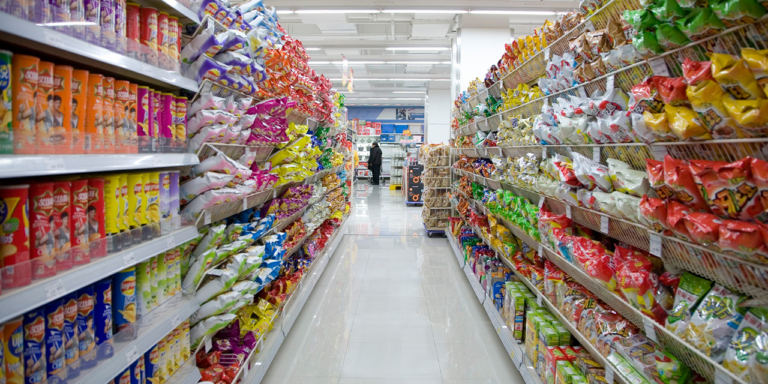In today’s workforce climate, frontline teams are expected to do more with less, leading to consistently heavy workloads, employee burnout, and high turnover in a scarce labor market. These obstacles have made it a struggle for store operations to be an attractive place to work and continue to deliver efficiently.
However, there are a few key aspects of retail execution that can help optimize store operations, improve efficiency, alleviate the impact of workforce capacity constraints, and reduce employee stress and confusion.
Highly efficient retail execution is especially important for retailers who manage fresh products. Store teams need to quickly manage short-life items, have visibility into potential stocking issues, and respond to them as soon as they arise. It’s certainly a retail workout these days to balance employee capacity with the fear of empty shelves and the constant looming threat of spoilage.
3 strategies to boost store efficiency with retail execution
1. Balanced deliveries
Smoother delivery peaks and balanced deliveries through central demand planning help store operations take advantage of low-traffic days for handling inventory and leave busy days for attending to customer service. Balanced deliveries can also help employees prioritize and accomplish tasks more effectively by having shipments aisle-ready and planograms optimized for efficient shelf-stocking.
Explore more about delivery flow smoothing: RELEX Delivery Flow Smoothing (relexsolutions.com)
By optimizing delivery schedules and balancing the volume of deliveries across multiple days, fresh retailers can ensure they have the right inventory to meet demand without overstocking and risking spoilage. This process can improve product quality, reduce waste, and increase profitability.
2. Visibility between in-store and central planning
Visibility between central planning and local store teams reduces clashing and allows each team to benefit from the insights of the other to improve assortment, deliveries, and task management. This open communication between in-store and central planning is important for handling workforce capacity and ensuring proper retail execution.
- Visibility into in-store activities and needs allows central planning to better allocate resources and adjust replenishment plans.
- Visibility into central planning allows store teams to offer local insight while focusing the majority of their time on daily tasks.
Where fresh inventory is concerned, central replenishment planning can support local assortment decisions. This centralized support can help store personnel create a more balanced local assortment to prevent spoilage and keep store teams focused on important tasks instead of adjusting every order.
READ MORE: Aligning the Management of Fresh and Center Store Products
3. Use of in-store collaboration tools
By having real-time, and preferably mobile, access to inventory levels, sales data, and other relevant information, central and store teams can work together to optimize inventory levels, reduce waste, and ensure that products are available when customers need them.
For example, a store associate with a proper collaboration tool can immediately flag an inventory or assortment issue based on local knowledge and observations. Prompt communication between central demand forecasts and regional knowledge will result in more efficient replenishment and better on-shelf availability. This collaboration can be especially beneficial for handling fresh inventory management, which can be difficult due to the short shelf life of those products.
Explore the power of collaboration tools: RELEX On-the-Go Demo (relexsolutions.com)
With fresher data, retailers can better optimize demand planning for each store by considering factors such as seasonality, local buying behaviors, and more. The more detailed the data, the better the in-store experience is for shoppers. That way, even ultra-fresh produce is available at the optimal time for the customer, and spoilage can be avoided.
4 essential features of retail execution technology
For optimal store efficiency, it is essential to have a retail execution tool that can provide the following:
- Real-time data and analytics to help retailers make informed decisions.
- Granular and location-specific inventory predictions.
- Collaboration tools to support employee communication.
- Data visibility that brings planning and execution into a unified platform.
- Real-time data and analytics provide insights into workforce trends, such as peak periods of demand, employee productivity, and labor costs, to assist in making more informed decisions around staffing levels and scheduling. With access to this information, retailers can respond quickly to changes in demand and adjust their workforce accordingly.
- Granular and location-specific inventory predictions help store teams best meet local demand and put their time toward managing exceptions and priority tasks.
- Collaboration tools allow central planning and local execution teams to stay aligned on the orders and tasks that add the most value to the business.
- Shared data visibility within a unified platform lets store operations personnel use their valuable in-field insight to improve ordering and inventory planning. While stores handle their local tasks, central planning experts can focus on timing fresh deliveries and having the correct assortment.
READ MORE: Coop Denmark Strengthens its Retail Planning Strategy with RELEX’s Unified Store Portal
Proper retail execution is critical to successful retail operations, especially for retailers that handle fast-moving and fresh products. By implementing the right strategies and using the most up-to-date technology, retailers can optimize labor costs, improve productivity, and reduce spoilage while maintaining customer service levels.
In a market where everyone must produce more results with less, investing in and supporting effective retail execution is a surefire way to take the burden off your store associates. This will allow them to continue providing the level of availability and service that keep customers coming to the store day after day.




